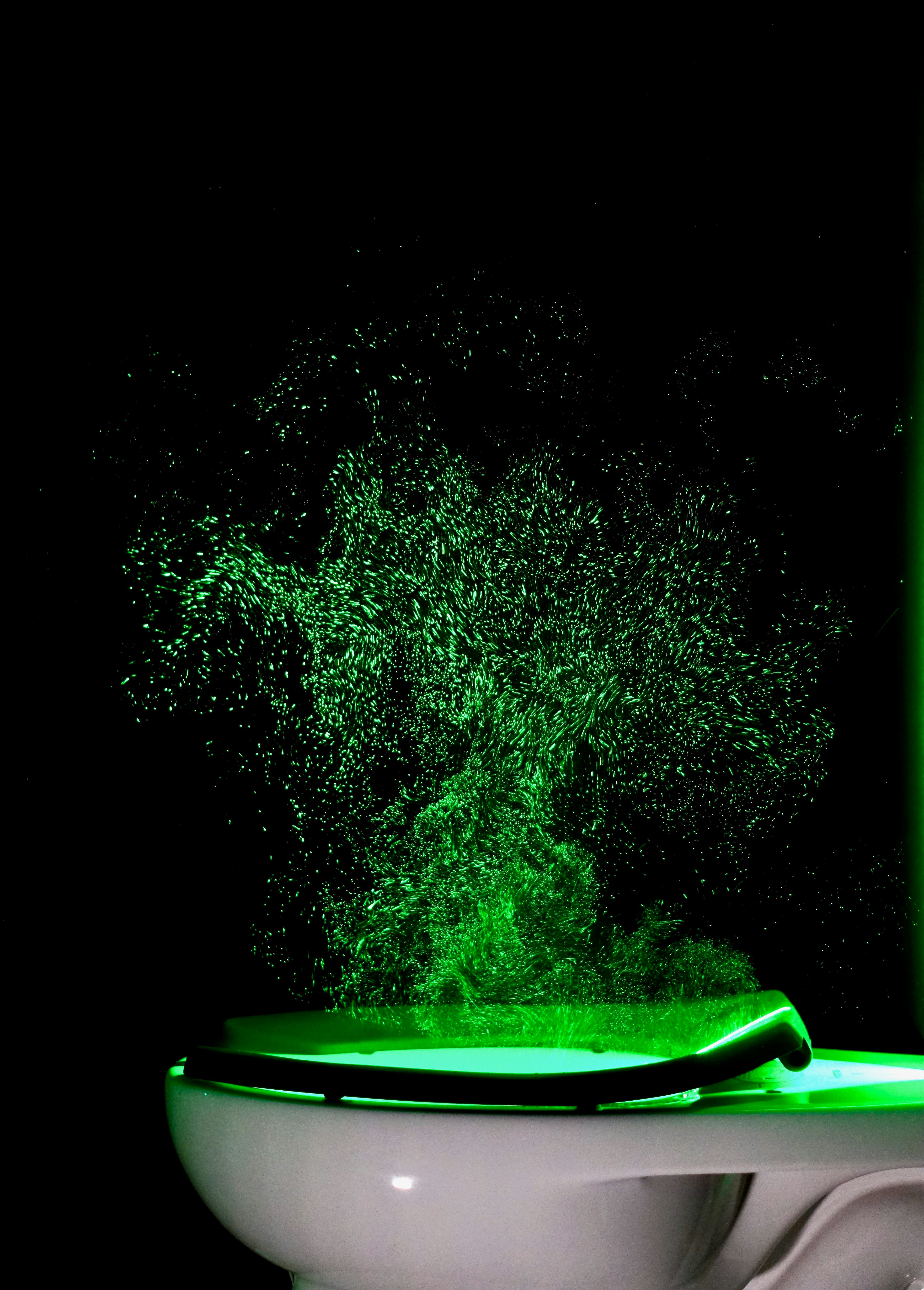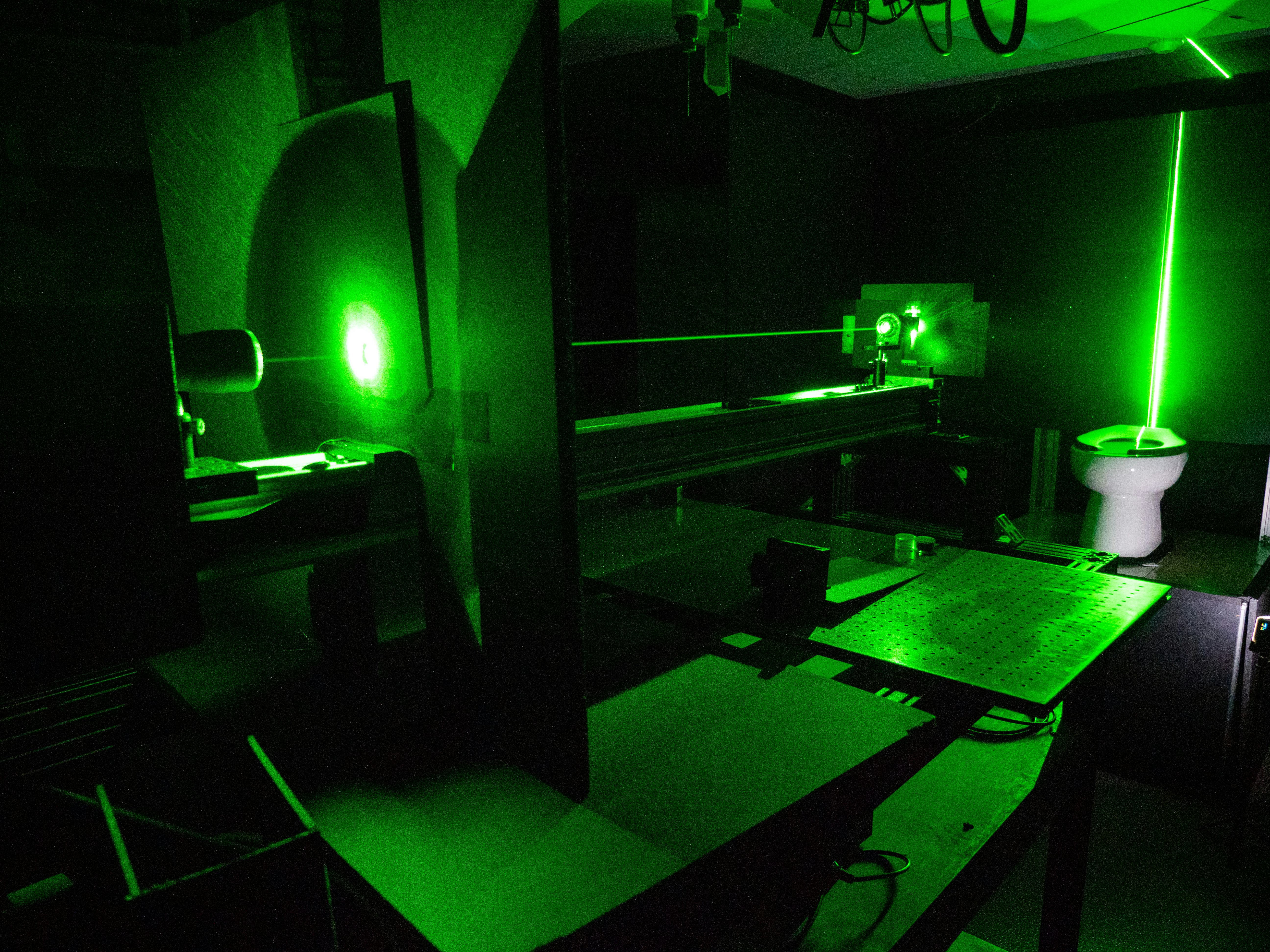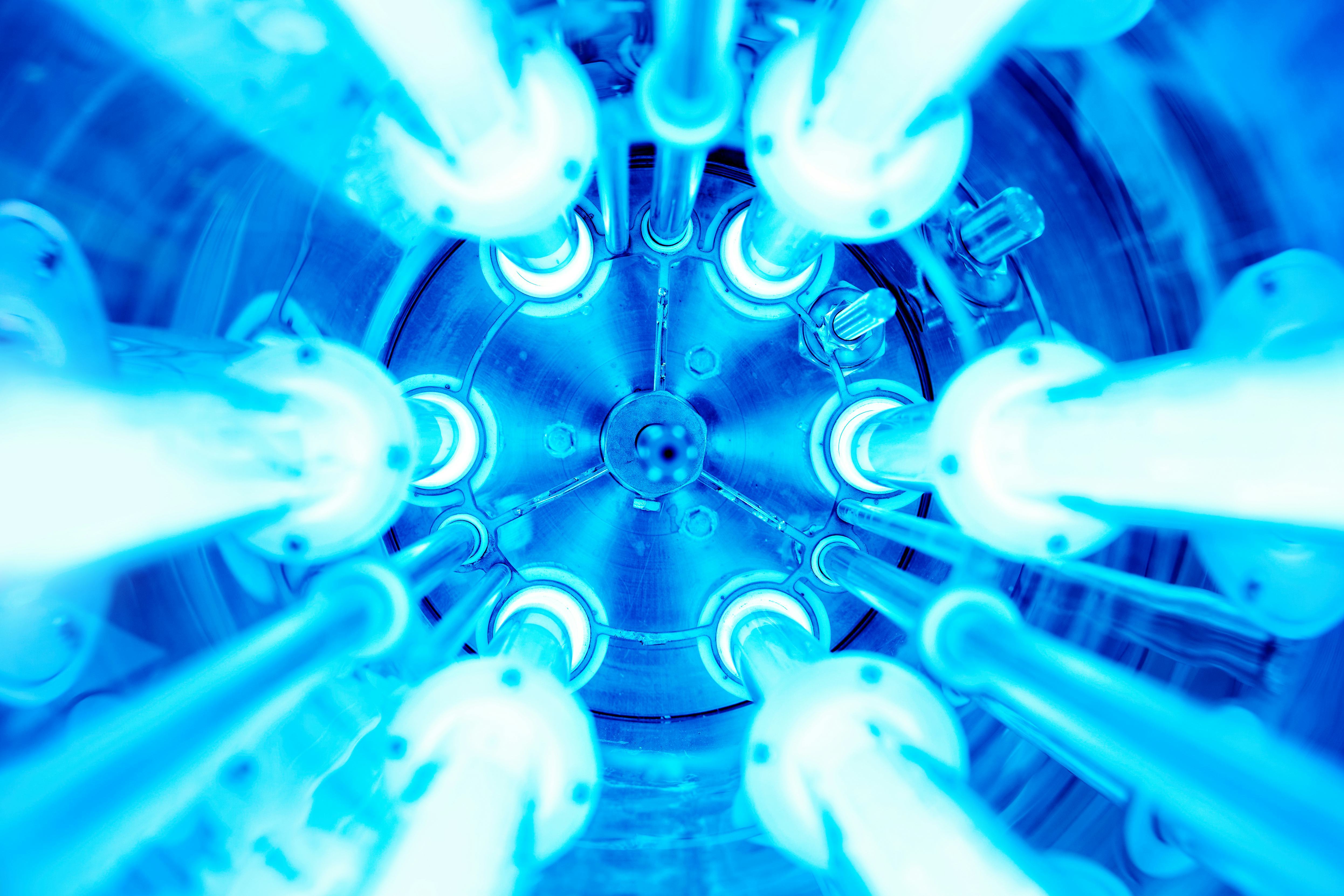
This summer, in Boulder, Colorado, John Crimaldi and his team of civil and environmental engineers gathered around a toilet — for science.
They positioned a laser to beam green light above the lidless bowl: If any normally invisible particles emerged as the toilet flushed, they hypothesized, they would scatter the light and appear as green dots. To record the potty dynamics, the team rigged up a camera a few feet away. Then … flush.
What happened next silenced the researchers. “We were all just stunned,” recalls Crimaldi. “We saw this incredibly energetic jet of particles shooting up towards the ceiling.”
Their laser caught a cloud, or plume, of particles flying into the air — then lingering there. “People just started laughing. They were like, ‘Oh, my God, you've got to be kidding me. That's what happens when you flush the toilet?’”
What’s new — In a study published today in Scientific Reports, Crimaldi’s team from the University of Colorado describes how their laser-based rig visualizes lidless toilet plumes in more detail than ever seen before.
Scientists who study invisible airborne particles have reported for over a decade that lidless public toilets can eject tiny droplets that contain urine, feces, and potentially dangerous pathogens into the surrounding environment. But it’s not clear how exactly how this dirty exchange goes down.
Now, this new study is among the first to dive into those muddy waters. The laser rig allowed the team to not only see the plume and watch its shape evolve with time, but also to count and measure the speed of erupting airborne particles.
Here’s the background — All the unsettling aerosol action begins with a flush. In North America’s public restrooms, flushes are powered by a flushometer, a mechanical diverter that evacuates and replaces water without a tank. If you’ve done your business in an American airport, school, or mall, you’ve seen these things.
A flushometer will yeet the visible evidence of the stall’s previous occupant away into the pipes. But what about the invisible stuff that can make us sick?
Viruses and bacteria, such as SARS-CoV-2 and Clostridium difficile, can spread via aerosols that travel from butt to toilet to lung. Even if the toilet water holds no urine or feces, it might contain Legionella, which can cause severe lung infections.
“The bowl water in a toilet contains elevated levels of pathogens for dozens of flushes after that contaminated feces was put in there,” Crimaldi says. By studying these public plumes in close detail, researchers could help mitigate the spread of toilet-derived diseases.

Why it matters — The recent experiment highlights just how far the particles may travel, hang around, and wreak illness. “Seeing is believing,” says Evan Floyd, an industrial hygienist and environmental health scientist at the University of Oklahoma Health Science Center who wasn’t involved in the new study. After all, a more knowledgeable public can be a healthier public. “That's really important, and there's probably a lot of value to that.”
These findings could also guide changes in toilet design, toilet operation, plumbing, or even ventilation, according to Crimaldi, and improve sanitation in crowded buildings like schools, offices, and hospitals, where potentially fatal pathogens can quickly spread.
You may wonder: Why can’t public toilets just have lids? Closing the lid before flushing does reduce a toilet’s plume significantly. But adding one more surface to sanitize — one more surface for people to touch — increases the risk of fecal-oral transmission.
“Somebody along the way has made the decision that the fecal-oral contact hazard was a greater risk and expense than toilet flush aerosol,” Floyd says. “But frankly, people really haven't believed that there's much toilet flush aerosol for a long time. It's only in the past 10 years or so that it’s becoming more accepted.”
So far, our grasp of the physics of flush plumes remains crude. In recent years, scientists have reported high-speed video of droplets and computer simulations of the physics involved. But neither visualize nor quantify what’s happening with the tiniest of toilet particles.
What they did — Using a flushometer-powered commercial toilet, Crimaldi’s lab sought a comprehensive view of toilet plumes (sans the usual excrement). The 5-nanosecond-long laser pulses blasted every 100 milliseconds or so, somewhat like a green strobe.
The scientists measured how the shape of the plume evolved over time by snapping images of the illuminated aerosols every few seconds after flushing.

Each laser pulse captured by the camera provided a freeze frame of aerosols, which they could analyze with a special algorithm to sketch out the particle velocities throughout the plume.
They noticed that the plume quickly shot up and back toward the wall behind the toilet. The densest region of particles — which would likely contain the highest concentration of pathogens — surged about a foot above the toilet bowl within 5.5 seconds. Within 8 seconds of a flush, the researchers observed that particles shot up about 5 feet. “That’s in most people’s breathing zone,” Floyd says.
Aerosols continued to spread over 60 seconds. “Most people don't realize there are fine particles everywhere,” Floyd says. “It's nice to have the quick visualization.”
In fact, Floyd suspects Crimaldi’s particle count might be conservative. Water from aerosols will evaporate, so the team likely measured less intensity over time. But in practice, he says: “All the solids are still there. So just like with COVID, you might have these respiratory droplets that are 2 to 10 microns in diameter.”
“The solids just go wherever the wind will push them,” he continues, even outside of the stall. Ventilation pushes particles around. Opening the stall door and walking create eddies that circulate aerosols. “The real problem with fine aerosol is there's no real good way to remove them outside of taking all of that air and passing it through a cleaning mechanism.”

What’s next — Crimaldi hopes that as the public comes to terms with the intensity of toilet plumes, industrial hygiene will improve. To boost bathroom sanitation, ventilation can be added above the plume. Maybe some UV disinfection, too, or gizmos called electrostatic precipitators that remove particles with an electric charge.
The team hasn’t repeated their experiment with excrement in the bowl, but Crimaldi is optimistic about the laser-based visualization method. “This gives us a tool for being able to test new toilet designs,” he says. He imagines that engineers could tinker with variables like water pressure, flush intensity, and bowl shape when brainstorming future commercial toilet concepts. Moving forward, this study can offer them a baseline with which to compare their work.
Redesigns may be tricky since changing each element could make toilets less efficient or effective at what they do well now, but Crimaldi maintains that it will be critical to address the plume hazard: “Look at the video,” he jokes. “It couldn't possibly be worse.”







